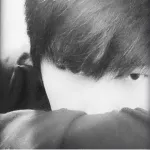Have you heard of pangender?
What is pangender?
Pan-gender refers to a phenomenon of ambiguous understanding of gender in social life and entertainment culture at present. The specific performance is the opposite dress, opposite behavior, interpretation of the opposite sex, from the appearance can not find the obvious gender characteristics of the individual.
The emergence of pangender is believed by some experts to be a result of differences within the same gender group as a result of accelerating social fragmentation, and is also believed to be the result of gender-neutral education between men and women.
Pangender and gender identity disorders
Pangender and gender identity disorder are two different concepts.
Pangender is when a person identifies as having more than one gender, or believes that their gender cannot be simply classified as male or female. This relates to an individual's gender identity and expression rather than sexual orientation.
Gender identity disorder is a psychological disorder in which patients are unable to determine their gender, or their gender identity and gender performance are inconsistent with their actual biological sex. This disorder can lead to social, emotional and professional difficulties.
While both address issues of gender identity, their definitions and meanings are different. Pangender focuses on diversity and inclusion in gender identity, while GID emphasizes a person's confusion about their gender and feelings of not conforming to their biological characteristics.
To find similar joy, you can connect with friends on the lesbian dating app.

The difference between pangender and pansexuality
Pangender and pansexuality are two different concepts that relate to the areas of gender identity and sexual orientation respectively.
Pangender is when a person identifies as having more than one gender, or believes that their gender cannot be simply classified as male or female. This relates to an individual's gender identity and expression, and has nothing to do with an individual's physical characteristics.
Pansexuality, on the other hand, is a sexual orientation in which a person is usually romantically or sexually attracted to people of multiple genders. Unlike homosexuality, heterosexuality and other sexual orientation, pansexuality is a broader category that includes feelings and expressions of all genders.
While both involve gender diversity, their focus and definitions differ. Pangender focuses on diversity and inclusion in gender identity, while pansexuality places more emphasis on how individuals feel and express themselves about all genders.
It is important to note that both pangender and pansexual should be treated with respect and equality. Everyone should be allowed to freely express their gender identity and sexual orientation without any form of discrimination or restriction. At the same time, we should also establish an inclusive and equal social environment, eliminate gender discrimination and prejudice, and promote social justice and equality.
Am I transgender?
Determining whether you are pan-gender may require some self-reflection and exploration. Here are some questions that may help you understand yourself:
Are you confused about your gender identity? Do you feel that you have more than one gender identity or can't simply be categorized as male or female?
Do you feel dissatisfied with your physical characteristics or do not fit with your self-identity?
Do you question or disagree with traditional gender roles and expectations?
Are you emotionally or sexually attracted to individuals of both genders?
To find similar joy, you can engage in lesbian live chat on Lespark.
It is important to note that each person's experiences and feelings are unique, and there is no set standard for determining whether a person is pan-gender. If you are confused or dissatisfied with your gender identity, you can try to seek professional counseling or support, and have an in-depth discussion and understanding with a professional. At the same time, we should also respect our own feelings and choices, not be limited by social expectations and traditional concepts, and freely express their gender identity and expression.

















